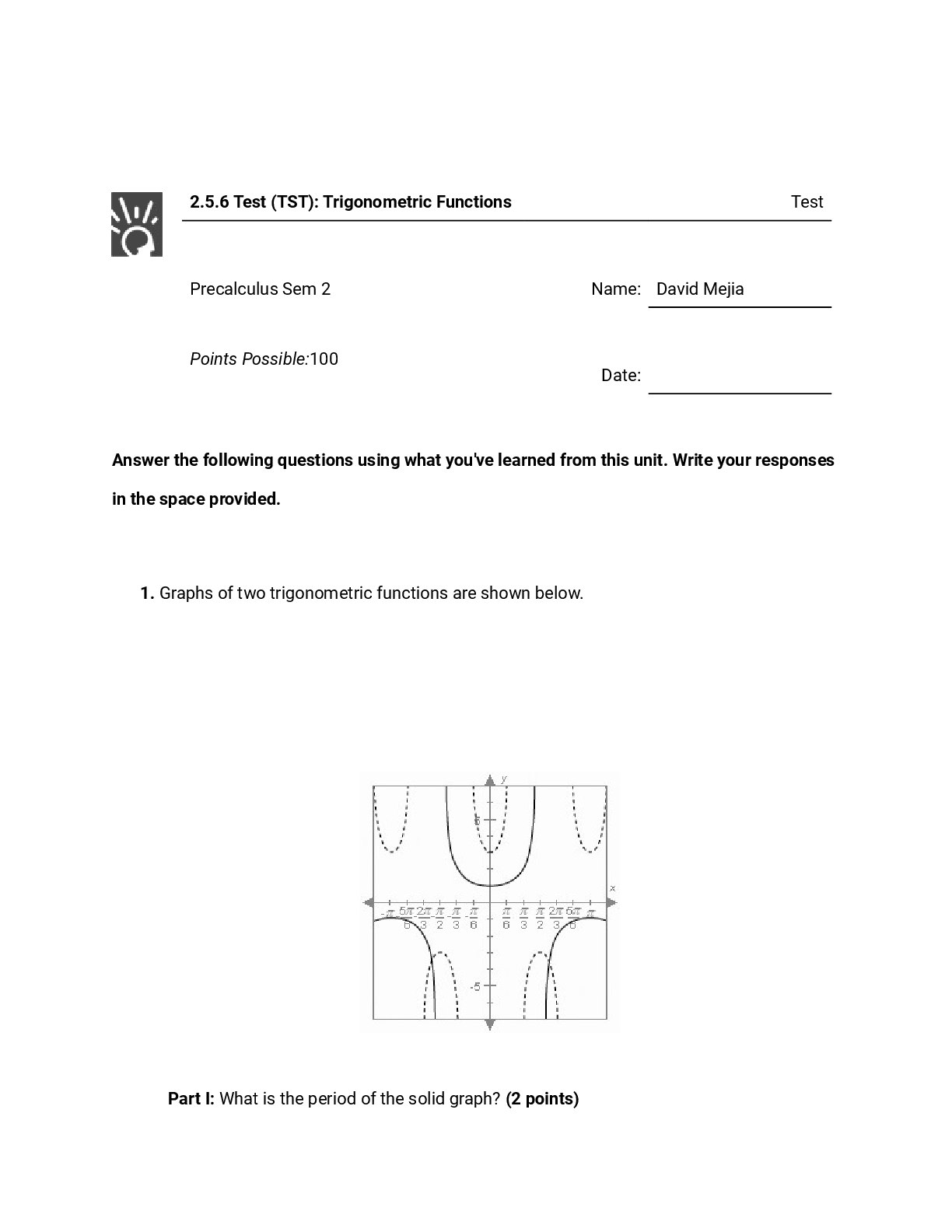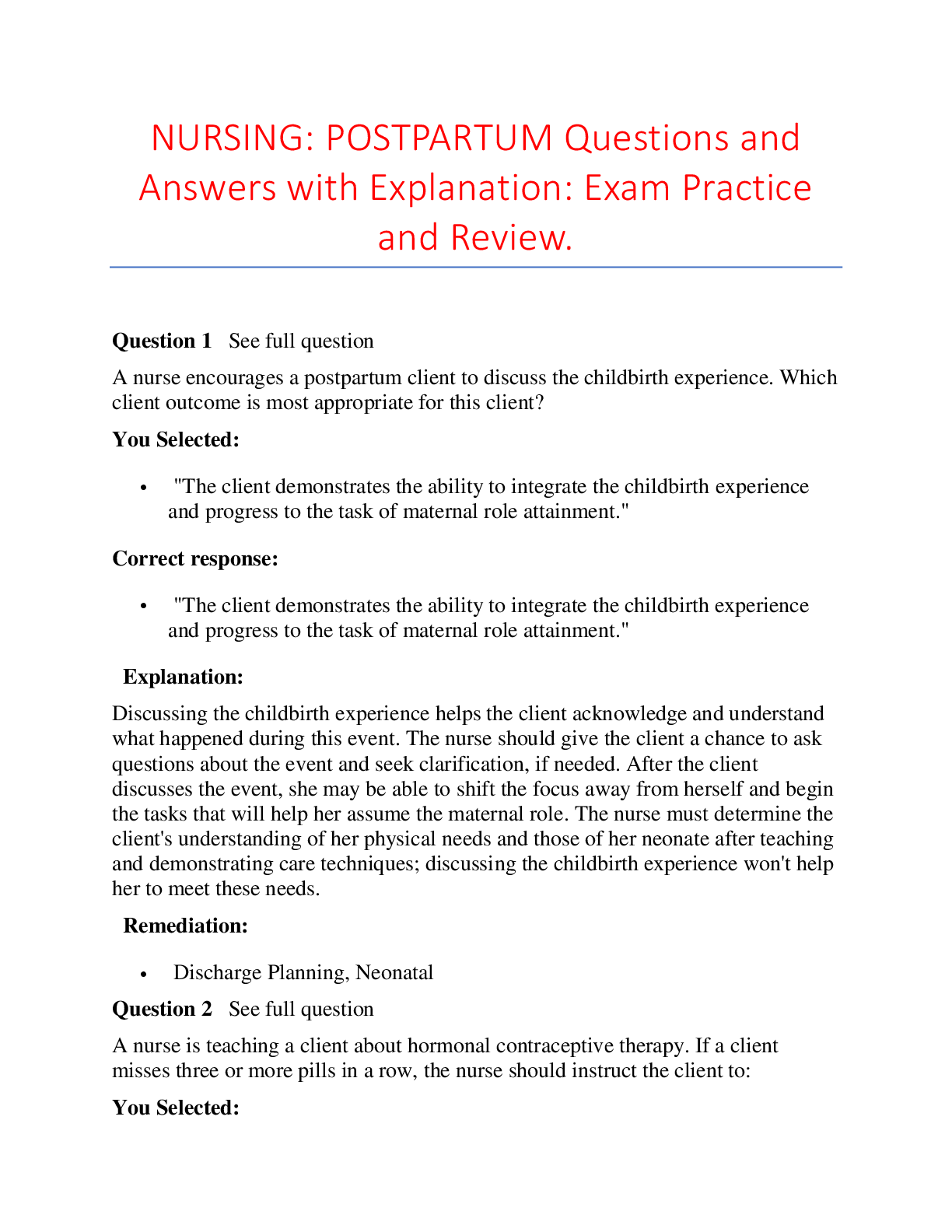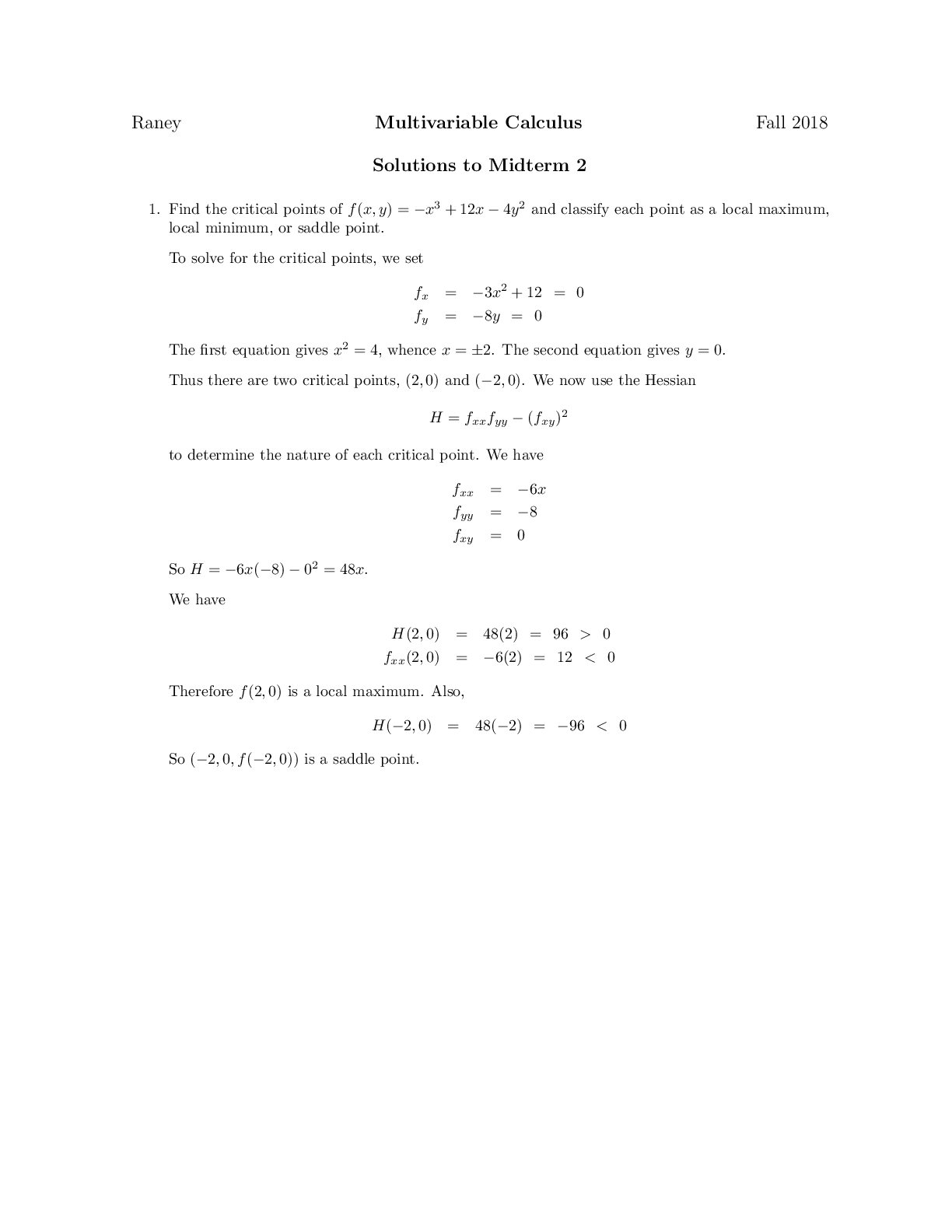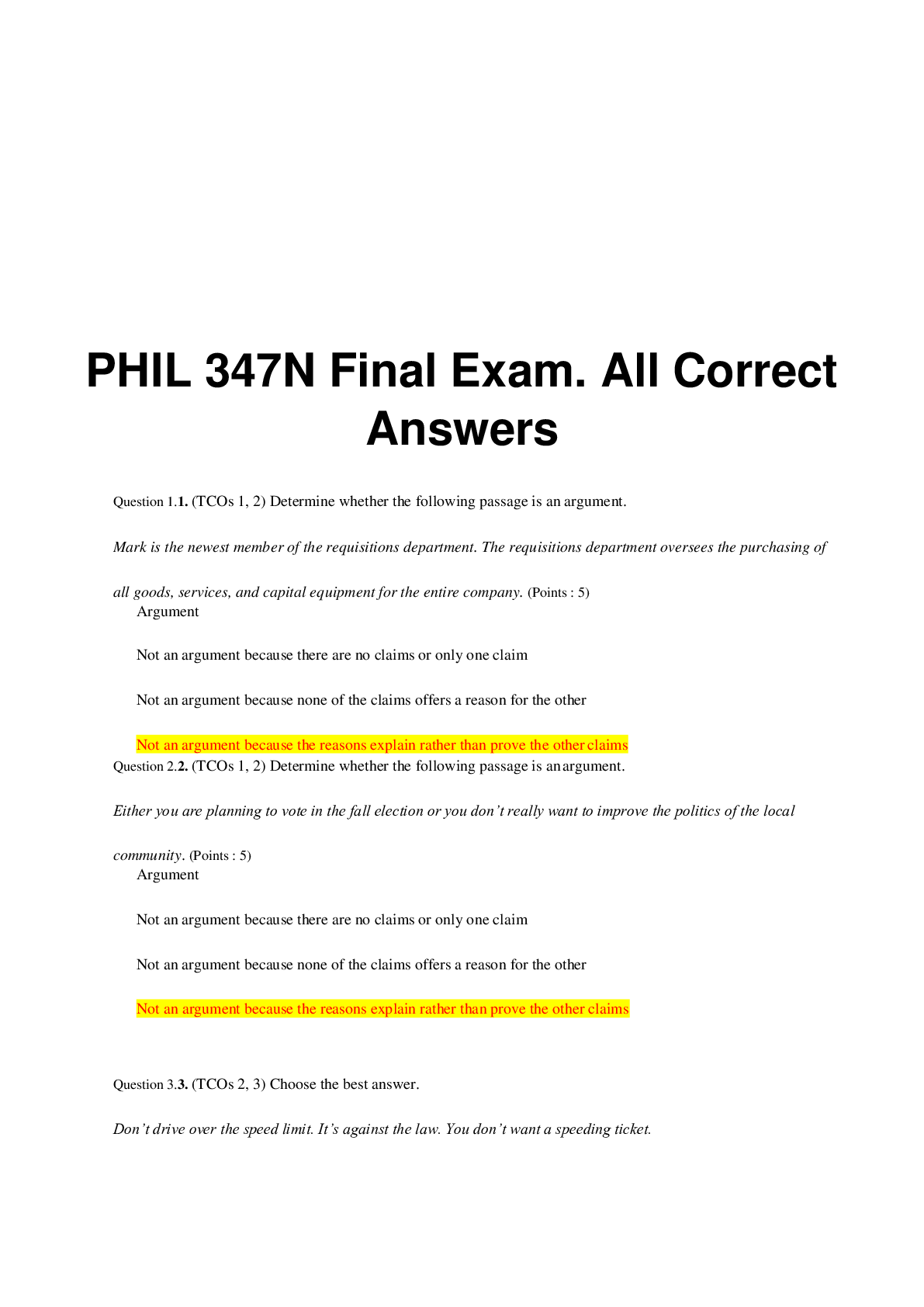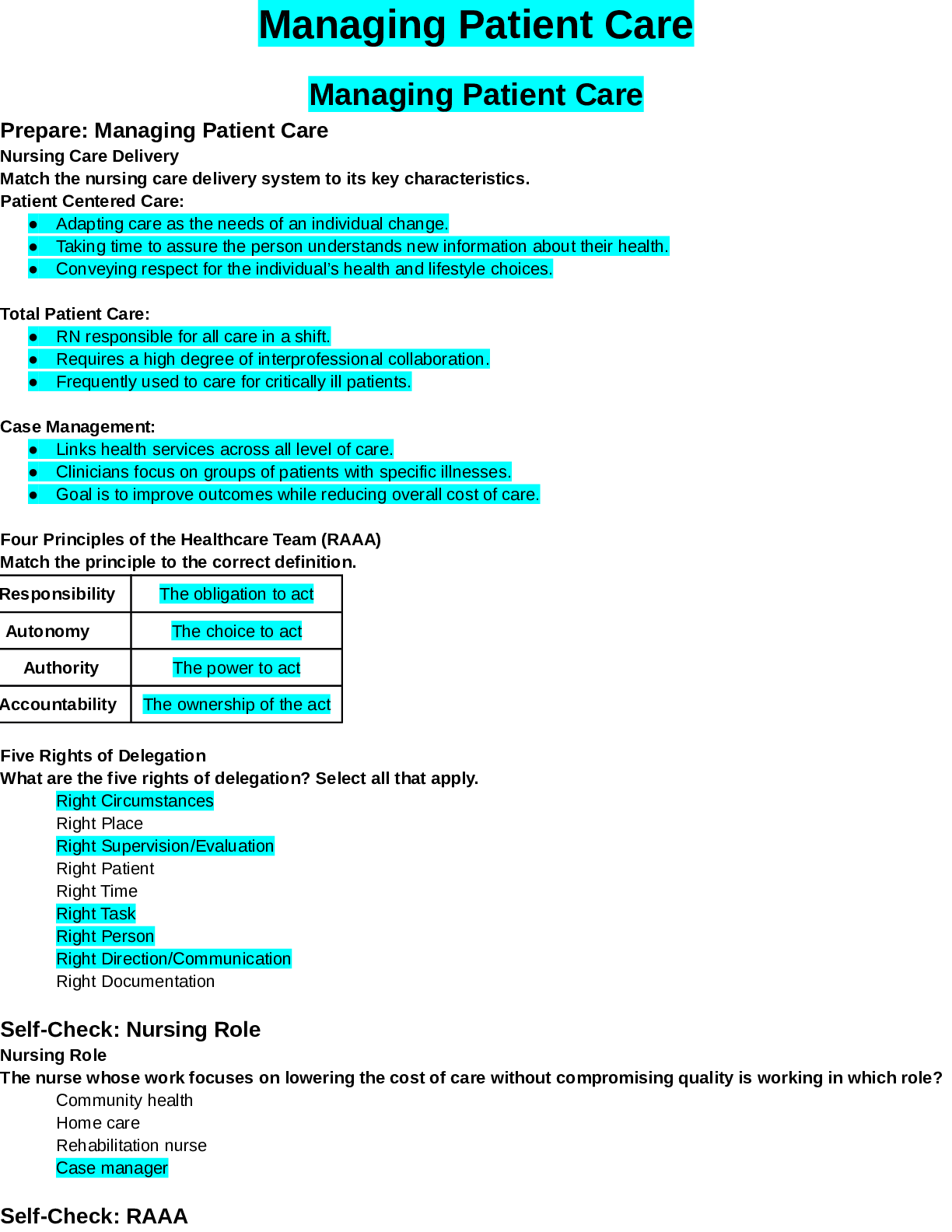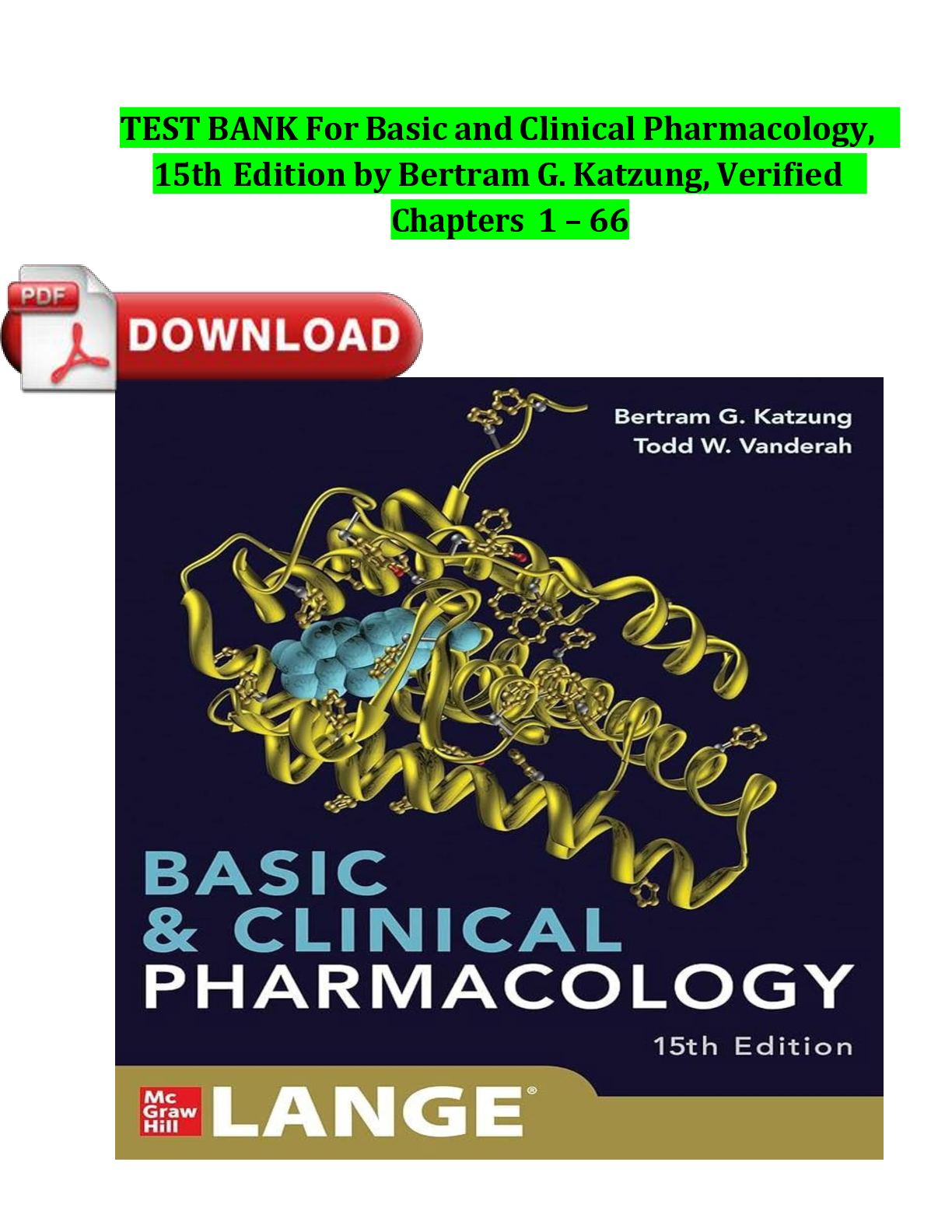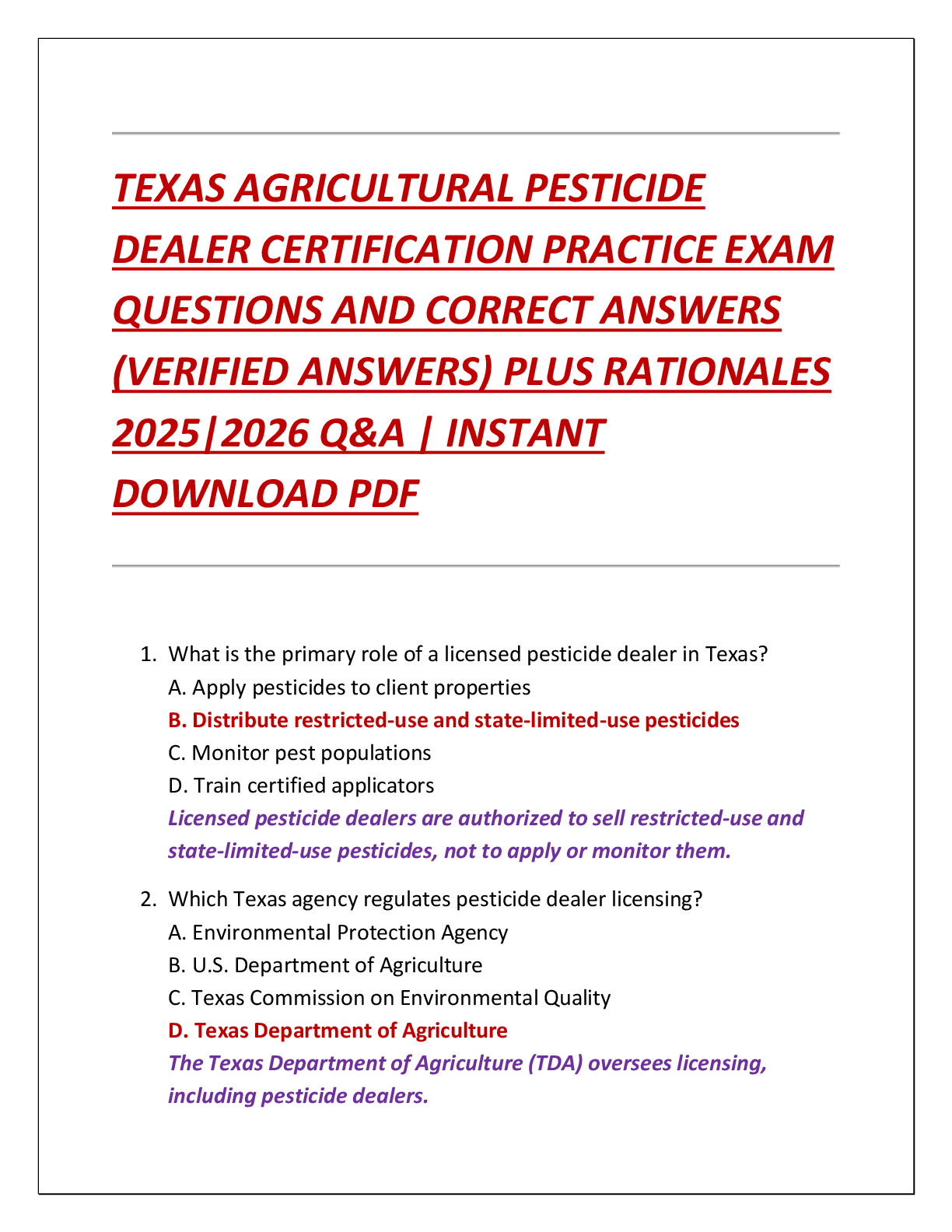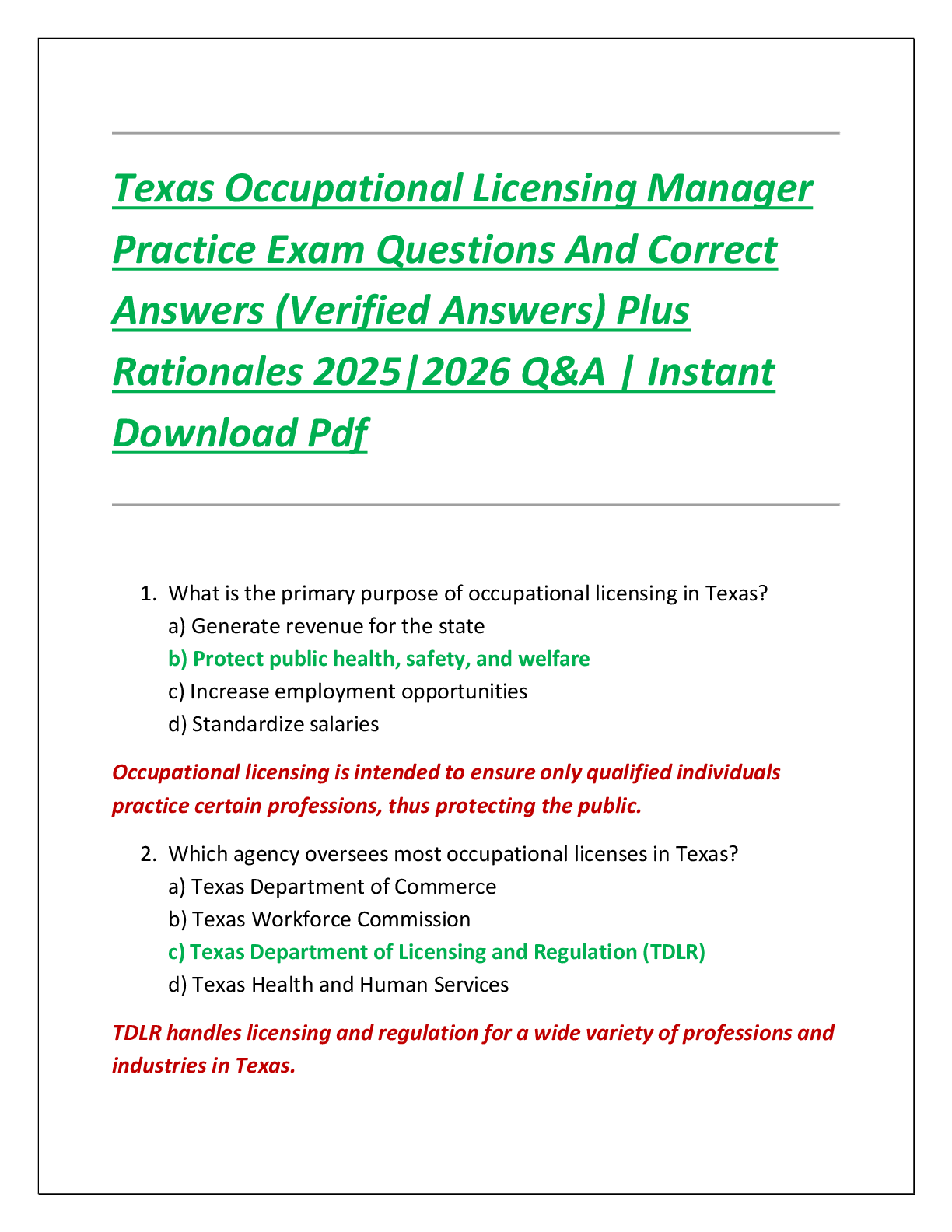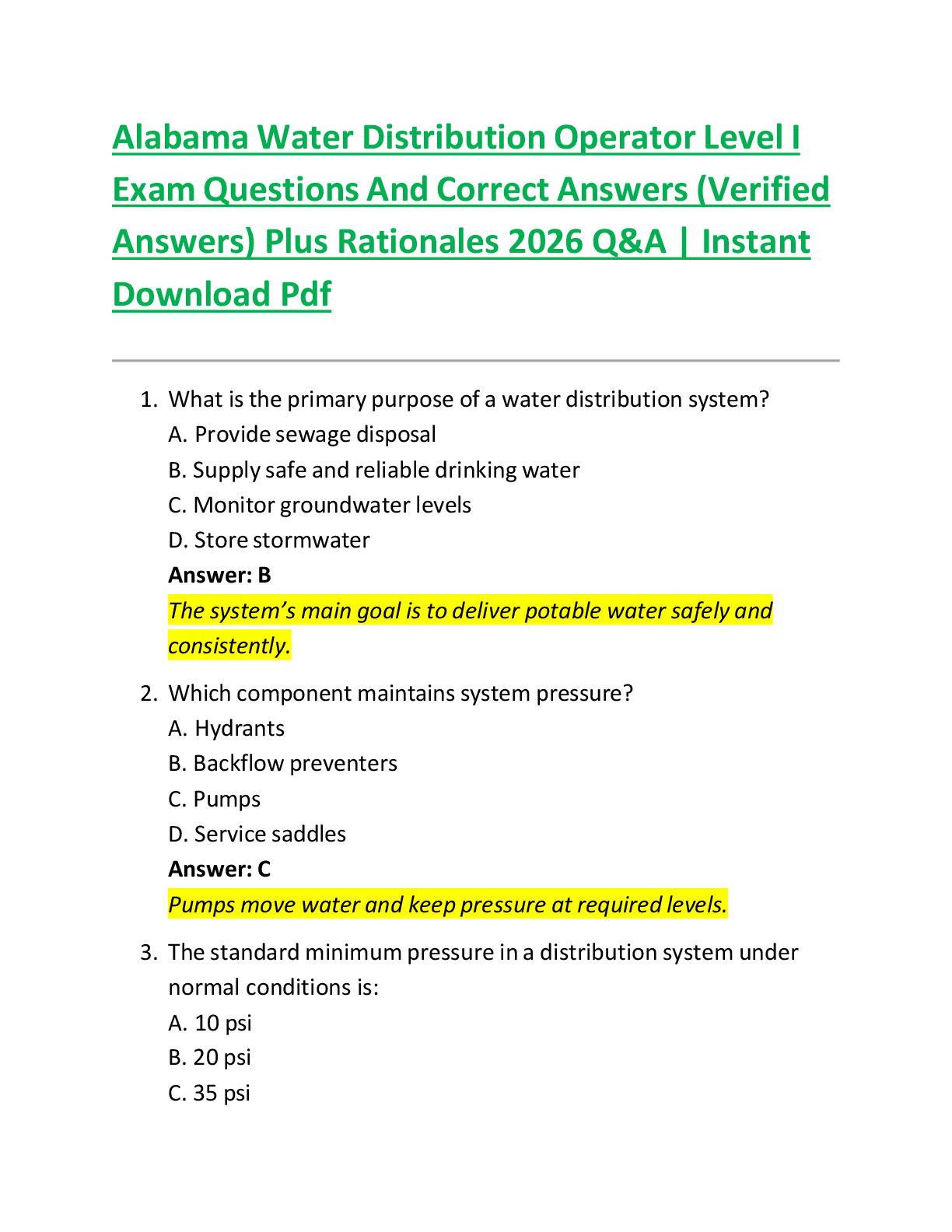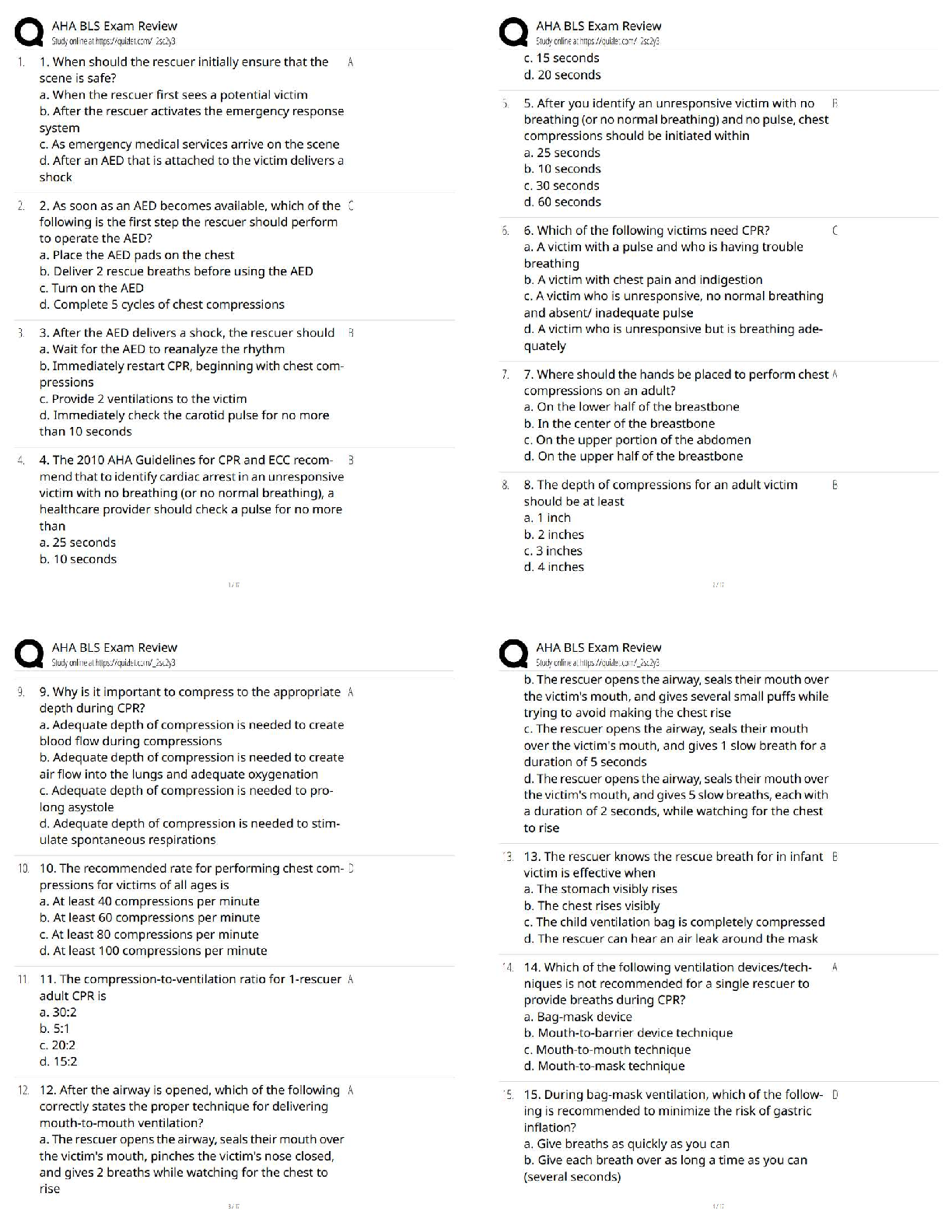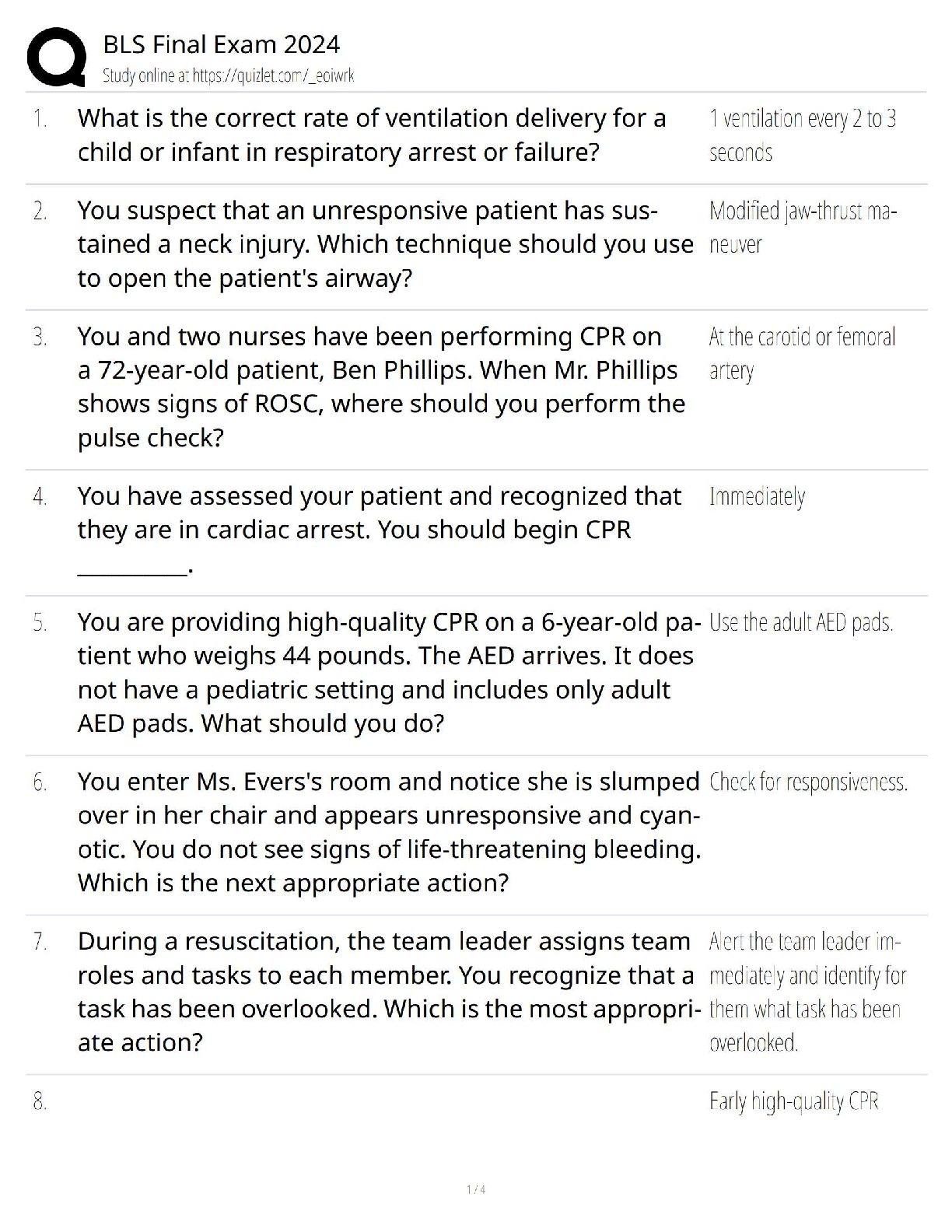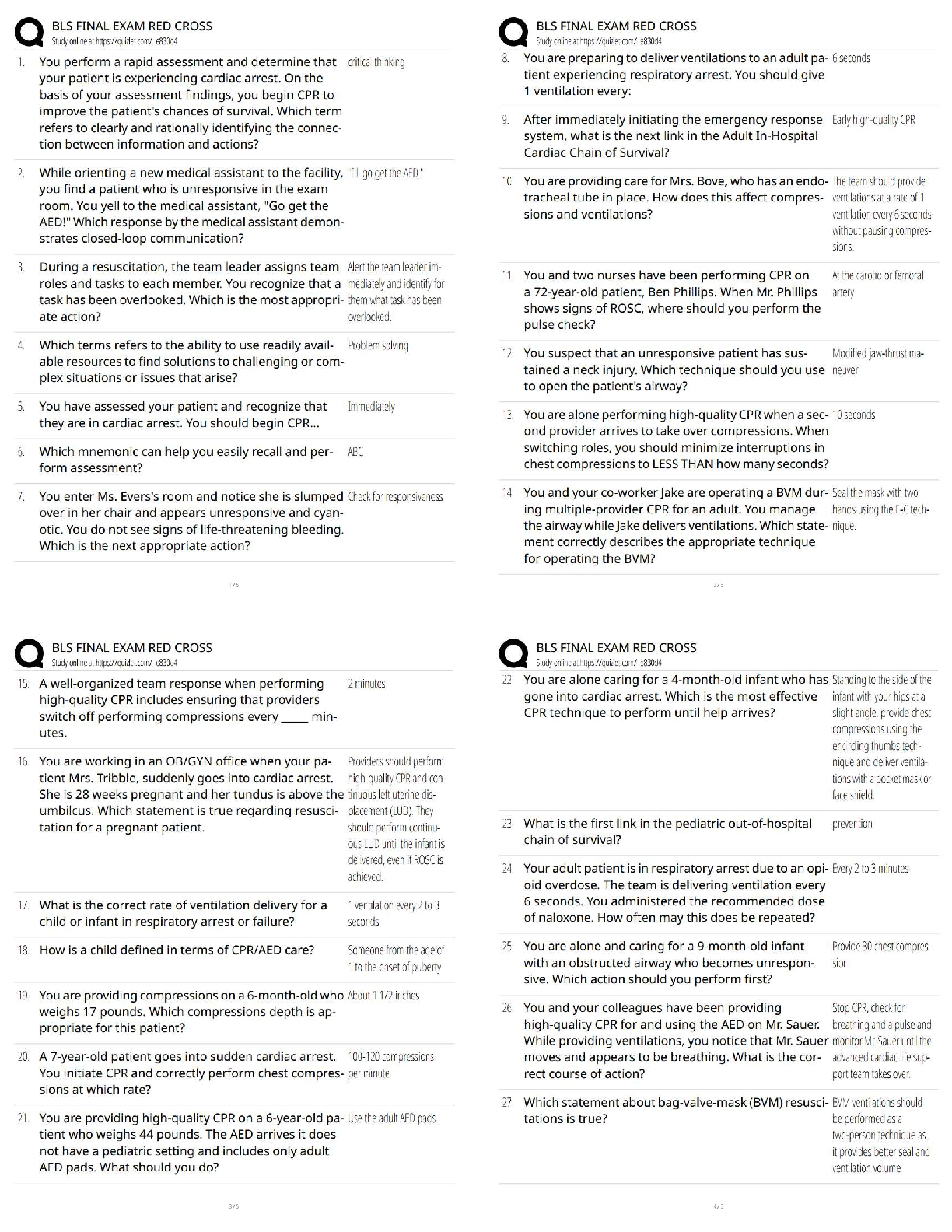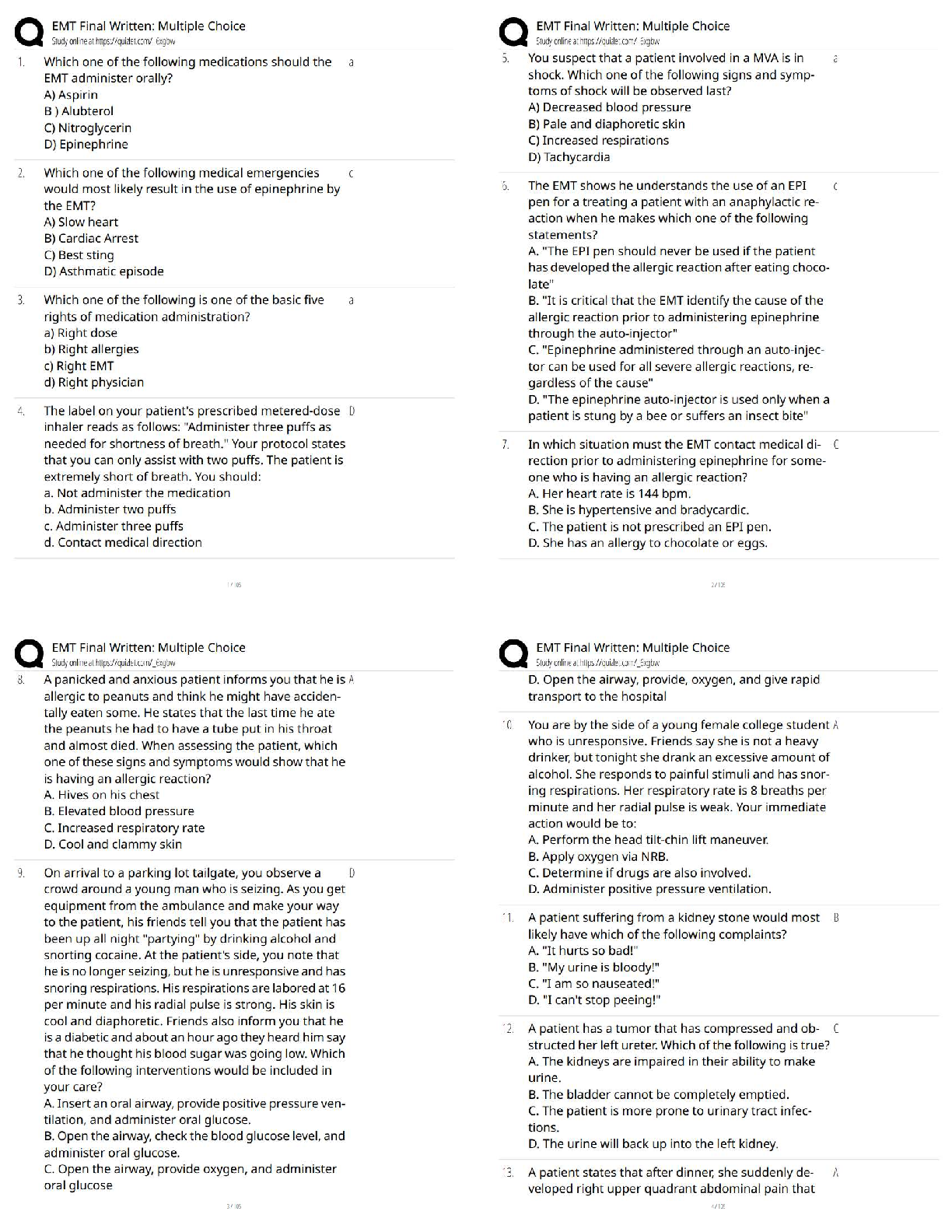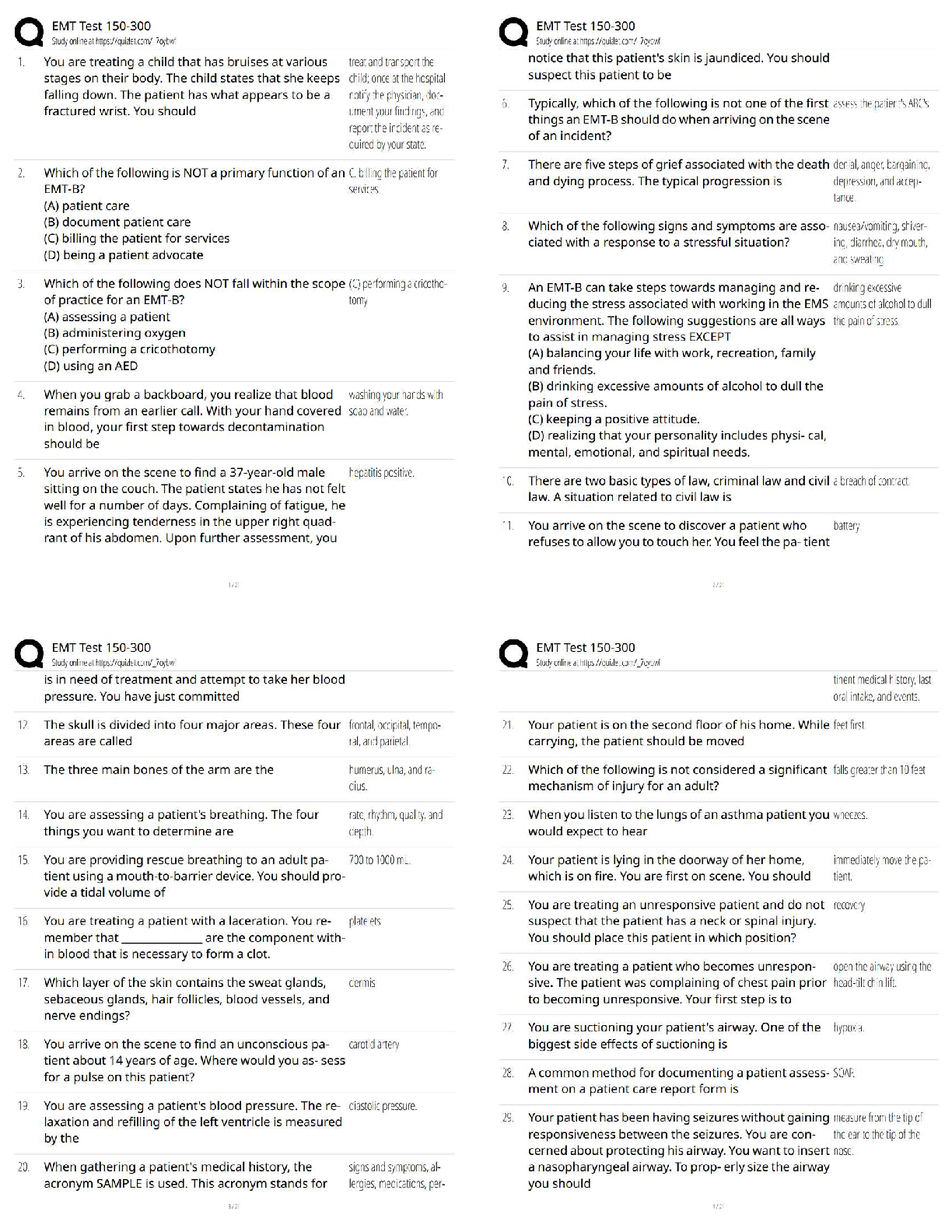BioChemistry > QUESTIONS & ANSWERS > North Carolina State University BIO 183 Assignment13. 17 Questions and Explained Answers. (All)
North Carolina State University BIO 183 Assignment13. 17 Questions and Explained Answers.
Document Content and Description Below
1. In the Griffith experiment, why did mice die when injected with live R bacteria plus heat-killed S bacteria? 2. Before beginning an experiment involving bacterial cultures, a recommended method ... for sterilizing the work area is 3. In an experiment involving bacterial cultures, what is the purpose of “streaking”? 4. In which section of the dish shown in the simple transformation experiment would you expect transformation of bacteria to occur? Write a short essay that explains your answer. 5. In the above experiment, why was there no growth in dish sector RL? 6. In step 2 of the experiment, bacteria are transferred from the S, R, and S + RL sections of the dish to a new dish containing nutrients plus streptomycin. Students performing this experiment are told that if growth occurred in the sector RL of step 1, they were not to use the S+RL bacteria from their own plates but to borrow a sample of this culture from students obtaining the successful results in the photographs. Write a short essay that explains why students should not use their S + RL culture if the RL culture in their dish grew. 7. Which of the following best explains the final results (step 3) of the experiment? 8. Mistakes are sometimes made in experiments. Write a short essay that indicates how the dish in step 3 would look if the following mistakes had been made: a) S bacteria (instead of R bacteria) were used during the detergent/heating step. b) The wire loop was not sterilized between bacterial transfers during the experiment. 9. Indicate whether each statement is true or false by writing true or false in each blank. If a bacterium contained the pGLO plasmid, which of the following could it do? Survive in an environment containing streptomycin. Survive in an environment containing ampicillin. Emit a green glow if placed under an ultraviolet light. Pass the GFP gene to other bacteria if killed in their presence. 10. In the GFP experiment, bacteria took up the pGLO plasmids when they were 11. Looking at set up for the GFP experiment (in which the dishes are numbered), which dish(es) will contain transformed bacteria? 12. The function of arabinose in the GFP experiment is to 13. Study the results of the GFP experiment, then write a short essay that answers the following questions: a) Why is there no growth in the LB/AMP dish on the top row? b) Why is there more growth in the LB dish than in the LB/AMP dish beneath it (on the bottom row)? 14. At the end of the GFP experiment, what two conditions are required for bacteria to fluoresce under ultraviolet light? 2. 15. At the end of the GFP experiment, (1) one of the fluorescent colonies is suspended in a large flask of growth medium and incubated. Then (2) the bacteria are lysed, and (3) the bacterial suspension is poured through a chromatography column. Fluorescent colonies were suspended in growth media and incubated to increase the number of transformed bacteria. Bacteria were lysed to remove bacteria that had not been transformed. The purpose of column chromatography was to obtain a pure sample of GFP from the bacterial suspension. The matrix of the column bound everything in the bacterial suspension except the GFP. 16. ACA, CAC, GAC, CCT, ATC, GAT, AGT Indicate whether the mutation was a nucleotide insertion, deletion, or substitution and where in the DNA fragment it occurred. Then explain how the mutation affected the amino acid sequence in segment 2. 17. Write the new m RNA: Write the new amino acid sequence: Indicate whether the mutation was a nucleotide insertion, deletion, or substitution and where in the DNA fragment it occurred. Then explain how the mutation affected the amino acid sequence in segment 3. [Show More]
Last updated: 3 years ago
Preview 1 out of 3 pages
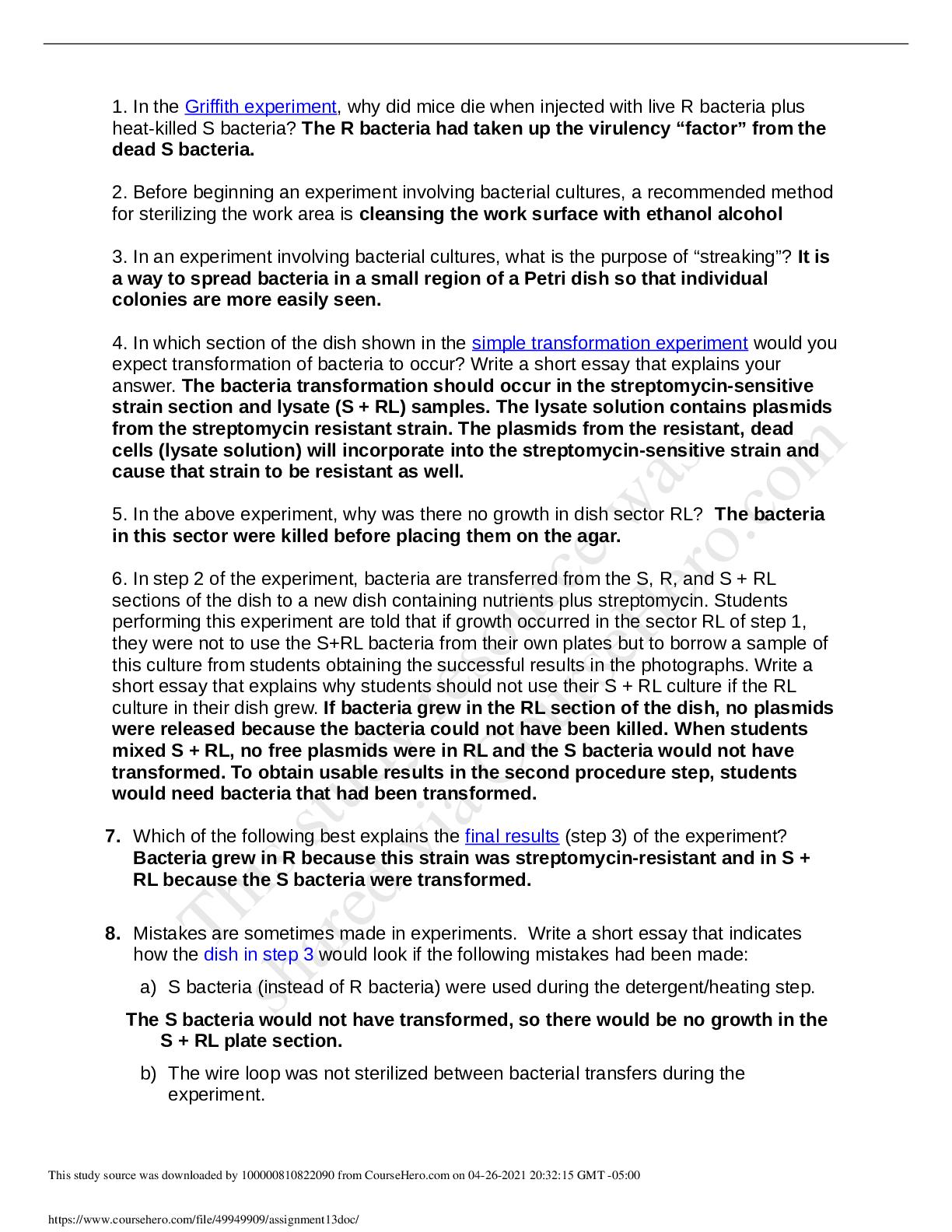
Buy this document to get the full access instantly
Instant Download Access after purchase
Buy NowInstant download
We Accept:

Reviews( 0 )
$13.00
Can't find what you want? Try our AI powered Search
Document information
Connected school, study & course
About the document
Uploaded On
Apr 27, 2021
Number of pages
3
Written in
All
Additional information
This document has been written for:
Uploaded
Apr 27, 2021
Downloads
0
Views
190



